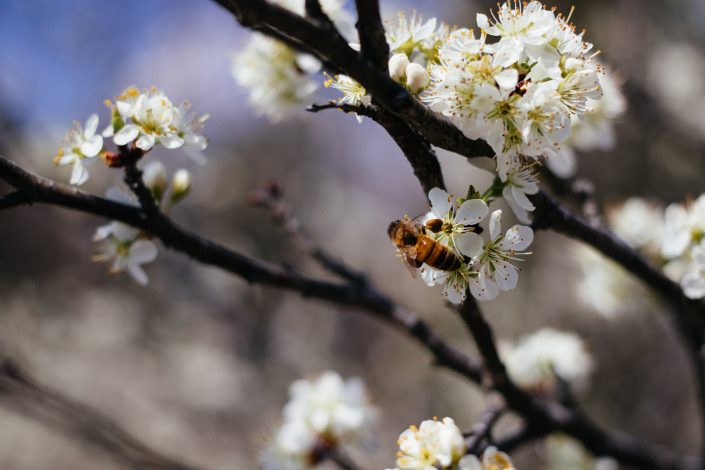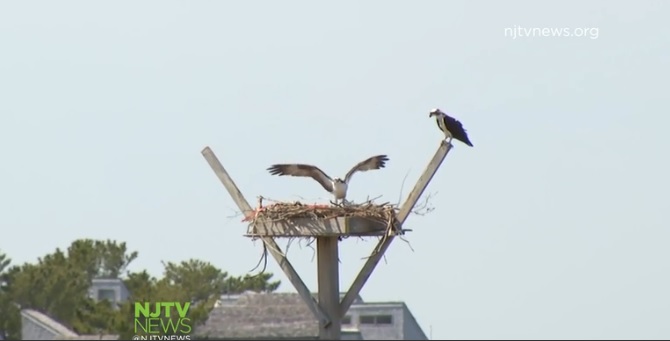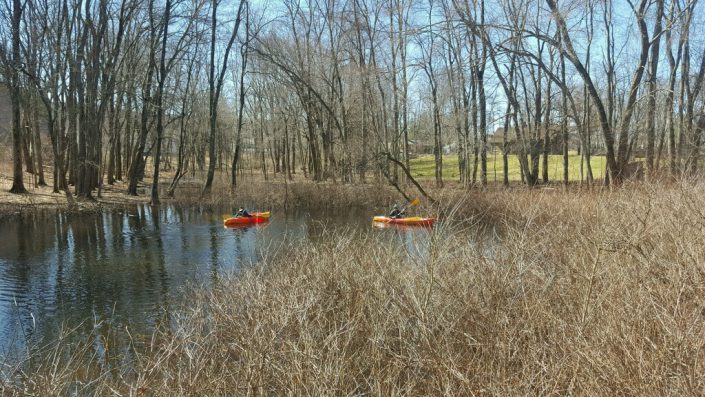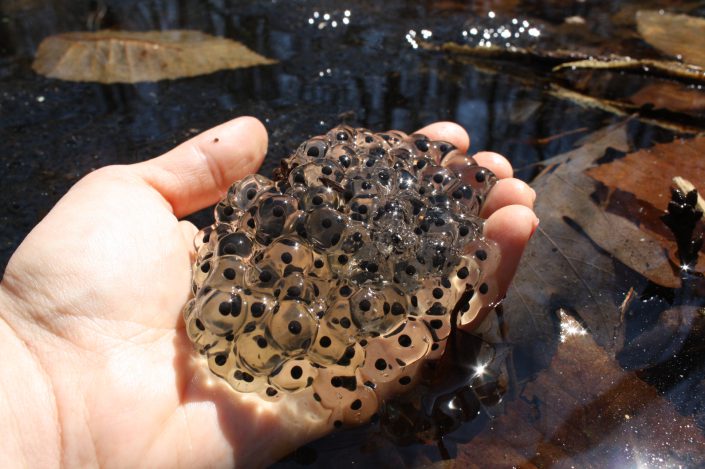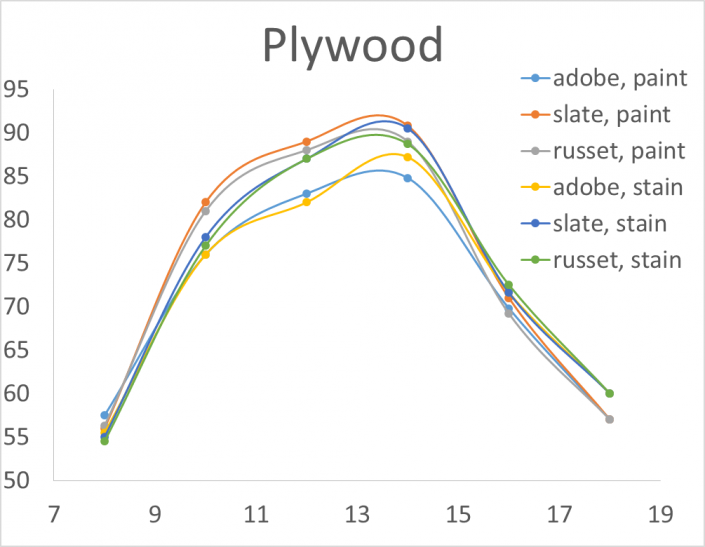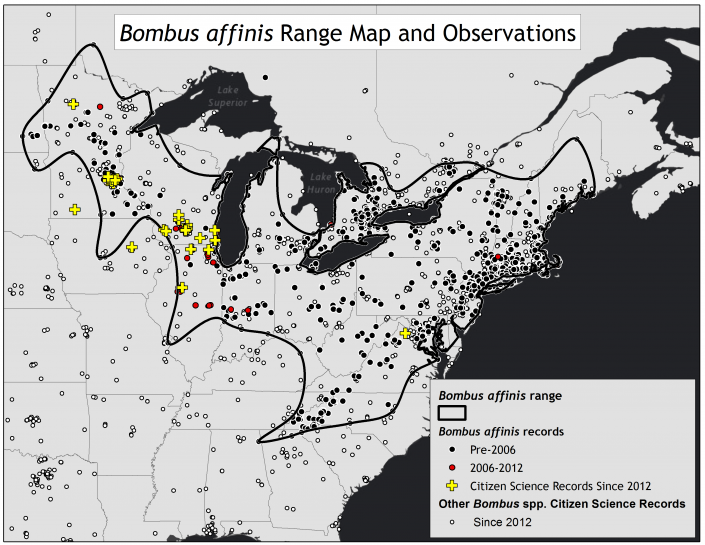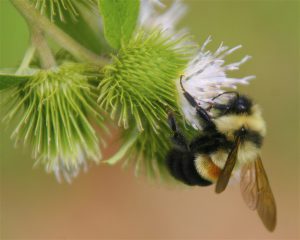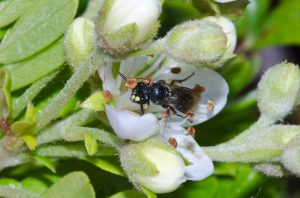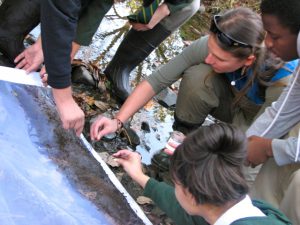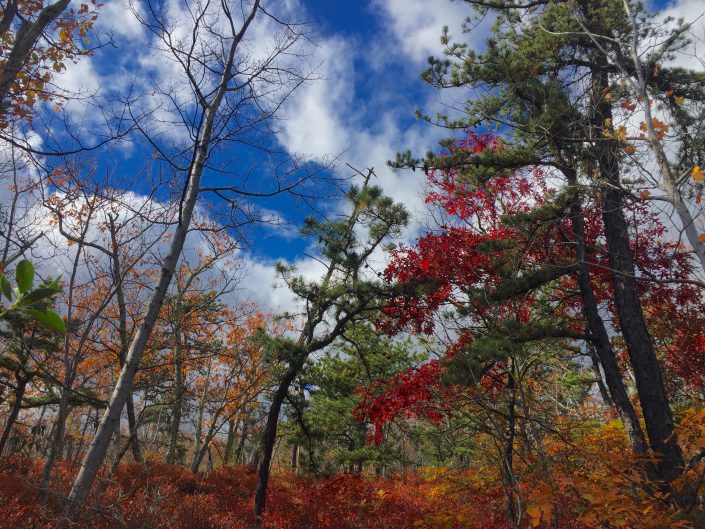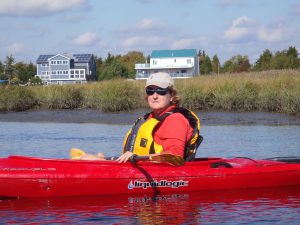20 Years of Shorebird Conservation and Research on Delaware Bay
By Dr. Larry Niles, LJ Niles Associates LLC
A Monumental Work of Conservation
This year marks the 21st year of the Delaware Bay Shorebird Project. As one of the longest running shorebird projects in the world, the only one of its kind in the US, we wanted to memorialize this monumental work. To do so we convened a daylong series of presentations by scientists and managers from all over the world who have worked on the bay. Here are the abstracts. They are worth a look by nearly anyone interested in shorebirds and Delaware Bay.

The presentations ranged widely. We heard talks diving deep into the science of shorebird ecology, like Phil Atkinson’s talk on the use of isotopes of carbon and nitrogen locked in feather samples and what they tell us about where knots spend the winter. Or Paul Smith’s talk on how modeled estimates of shorebird numbers compare to numbers counted from an airplane. On the other side of our scientific work were talks like Laura Chamberlin’s describing the role volunteers play in saving stranded horseshoe crabs rolled over by heavy seas or impinged in concrete rubble and derelict wooden bulkheads. In between were talks like those by David Stallneckt on the role of shorebirds in the transmission of flu viruses and how that knowledge might prevent the next pandemic of flu in people.
I liked Joe Smith’s talk on the restoration of Delaware Bay beaches and Ron Porter’s talk on the movement of shorebird tracked by tiny devices called geolocators.
Altogether they spoke loudly of the 20 years of intense study and conservation by our devoted team of scientists, managers and volunteers. In those 20 years of conservation of Delaware Bay we learned basics of protecting any place loved by people who love wildlife.
Dollars on the Beach
As with many places in this divided country of ours, and in many places in the world, we have witnessed on Delaware Bay a sad and wholly preventable natural resource tragedy. It’s now 20 years since the Atlantic Coast fishing industry nearly decimated the horseshoe crabs of Delaware Bay. They didn’t aim to do this of course, but as with any tragedy of the commons, once the crabs gained value as a bait, everyone wanted their share before it was lost. They hauled away millions of crabs, no one really caring about the consequence to the bay or the wildlife that depended on the crabs. It was a race to the bottom, that would not have been stopped if it weren’t for the scientists and managers that stood up to the industry, many of which gave presentations in our workshop.

The battle gave us several important lessons.
The first revolves around the value of the bay, the crabs and the shorebirds. We biologists, managers and public outreach people often see the natural value of this ecosystem in terms of its meaning to us. We are inspired by the knot’s magnificent journey covering 10,000 miles, often flying 6 days continuously. We are awed by the natural system that responds to change much as our own body fights for life against all the many abuses we cause or suffer. But we often miss the real value. During my time on the bay we have defended this valuable natural resource from many assaults, the winner take all crab harvest, the greedy exploitation of crab blood by medical companies, the overreach of aquaculturists plotting out the use of intertidal zones without regard to impact. Underpinning each of these threats is not esoteric value, but real wealth.
I once had a conversation with Rob Winkle, before he retired as Chief of Law Enforcement for NJ Division of Fish and Wildlife. He said “Larry you’ll never be able to protect these crabs, because to many people, they are dollars on the beach”. In other words, natural wealth is wealth, pure and simple. The question is – do we protect this wealth for our children and grandchildren to make up their own minds about how to spend it?
Protection Requires a Relationship
The real value of natural resources speaks to the second lesson. Protection is not only an action composed research, monitoring and management, it is also a long-term relationship with a place. Those of us working on the bay for 20 years know this very well. The abstracts speak to the relationship and our continuing efforts to understand and improve, to rebuild what was lost, to anticipate what comes next. If in 1997 we started work in the bay to publish a few papers and move on to the next interesting place, the battle to save this vital shorebird stopover and horseshoe crab spawning area would have been lost. The dollars crawling up on the bay beaches means protection doesn’t end with fighting one short-sighted greedy use, because there will be an inevitable successor. It takes a long-term relationship to develop protection and keep it vital and active.
I learned this many times in my career, most recently from my good friend David Santos now a professor at the University of Belem in northern Brazil. We have been doing work in the northern coast, a major wintering areas for Arctic nesting shorebirds. After a passionate discussion on how to best bring greater protection of the area he said “you come here for a few weeks and think you can save this place”. He was right, the truth is we can only help if we commit to work in northern Brazil for enough time to get it right.
And this is my final lesson. There is no easy way to develop a long-term effort to prevent the inevitable series of short sighted use of a natural resource without the help of the people who care.

When Clive Minton and Humphrey Sitters first came to the bay to start the project that is now 20 years old, I was awed by their experience, skill and knowledge. I thought why are they doing this? Neither were being paid only supported to do the work. I was employed as the Chief of NJ Fish and Wildlife’s Endangered Species Program. Now I know, it is only because they care. They are fascinated by the bird’s natural history, they publish scientific papers on the subject but they come year after year because they care.
There’s more to this than just tree-hugging emotionalism. In the US, we have gradually professionalized conservation, ensuring only paid staff do the work with only minor roles for users. It’s an entirely credible position in times of flush budgets. Its pitfall becomes obvious in the age of Trump, years of budget cuts and increasing influence of resource industries dismantle that achieved in the good years. Overall it ends with natural resources declining in nearly every section of the country.
Clive and Humphrey, come from England and Australia where conservation depends heavily on volunteers. It’s a pastime to research, monitor and conserve birds, not necessarily something that pays. For example, the Royal Society for the Protection of Birds (RSPB) has over a million members, but over 18000 volunteers working at 200 preserves and only 1300 staff. Remember this is in a country that has a population of 53 million. By contrast in the US with a population of over 300 million National Audubon Society half the number of members and staff and nearly the same budget.
In our experience these numbers don’t speak to the reality of how people actually feel in the US, or at least hear on the bay. We can say without reservation that the research, monitoring and conservation on the bay depends on the dedication of many volunteers taking part in our work. We literally could not do the work without their help.
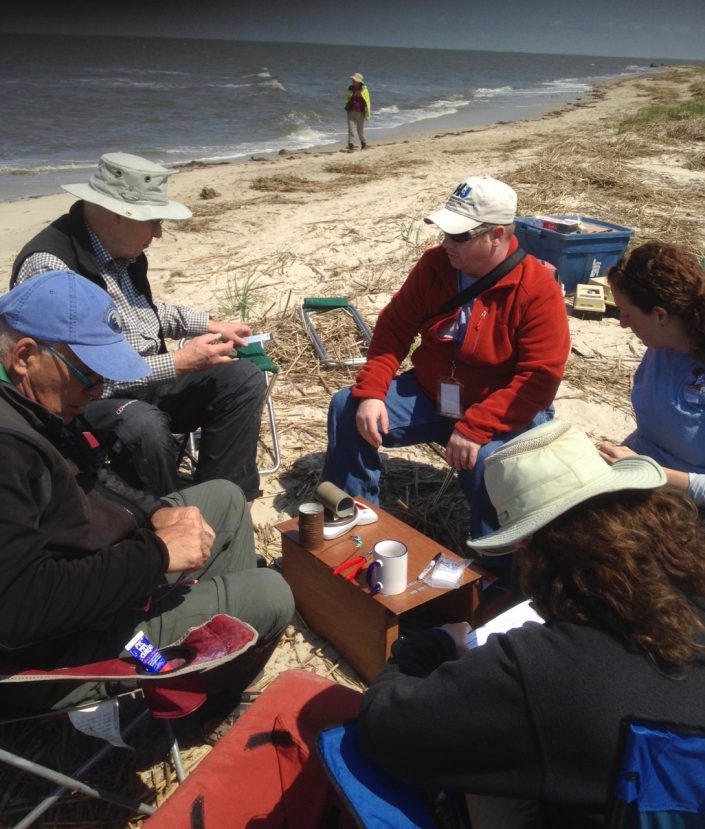
And so, this is the final lesson. The best way to overcome this cycle caused by the relentless exploitation of the bay’s natural wealth is building a team of people devoted to it study and conservation. This involves the many professionals who care enough to maintain a focus through the ebb and flow and agency prerogatives, a team of retired professionals and young adults seeking experience for their nascent careers and just as importantly as many people who care enough to put time into the yearly care of this valuable natural systems.
Dr. Larry Niles has led efforts to protect red knots and horseshoe crabs for over 30 years.
LEARN MORE
- Delaware Bay Workshop Program & Abstract
- Delaware Bay Shorebird Project
- 2016 Delaware Bay Shorebird Project blogs
